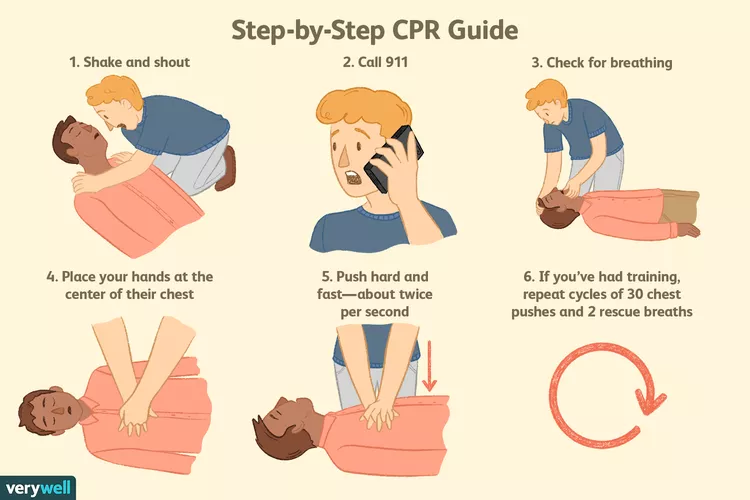<<back to Life-saving Skills page <<
Cardiopulmonary Resuscitation (CPR)
A first aid technique that can be used if someone is not breathing properly or if their heart has stopped. Cardiac arrest occurs when someone's heart stops beating, causing them to lose consciousness and stop breathing.CPR keeps blood circulating and delivers oxygen to the body until emergency help arrives.
The goal of CPR is to keep oxygen flowing in and out of the lungs and to keep oxygenated blood flowing through the body.
7 Steps of CPR
- Check for danger
- Call for help
- Check the victim's airway
- Give two rescue breaths
- Perform chest compressions
- Switch roles with the compressor
- Continue compressions until advanced medical help arrives

How to Perform CPR?
- Place the heel of your hand on the center of the person's chest.
- Place the palm of your other hand on top.
- Press down by 5 to 6 centimeters (2 to 2.5 inches).
- Perform 100 to 120 compressions per minute.
- Count aloud as you push in a fairly rapid rhythm.
- The compression to breathing ratio for adults is 30 to 2.
When to "DO" CPR?
When someone is unconscious
Cardiac Arrest
Choking
Electrocution
Drowning
Drug Overdose
Suffocation
When to "NOT" do CPR?
Obvious Death
Signs Of Life
Fatigue
Emergency Medical Service (EMS) Arrival
Unsafe Scene
